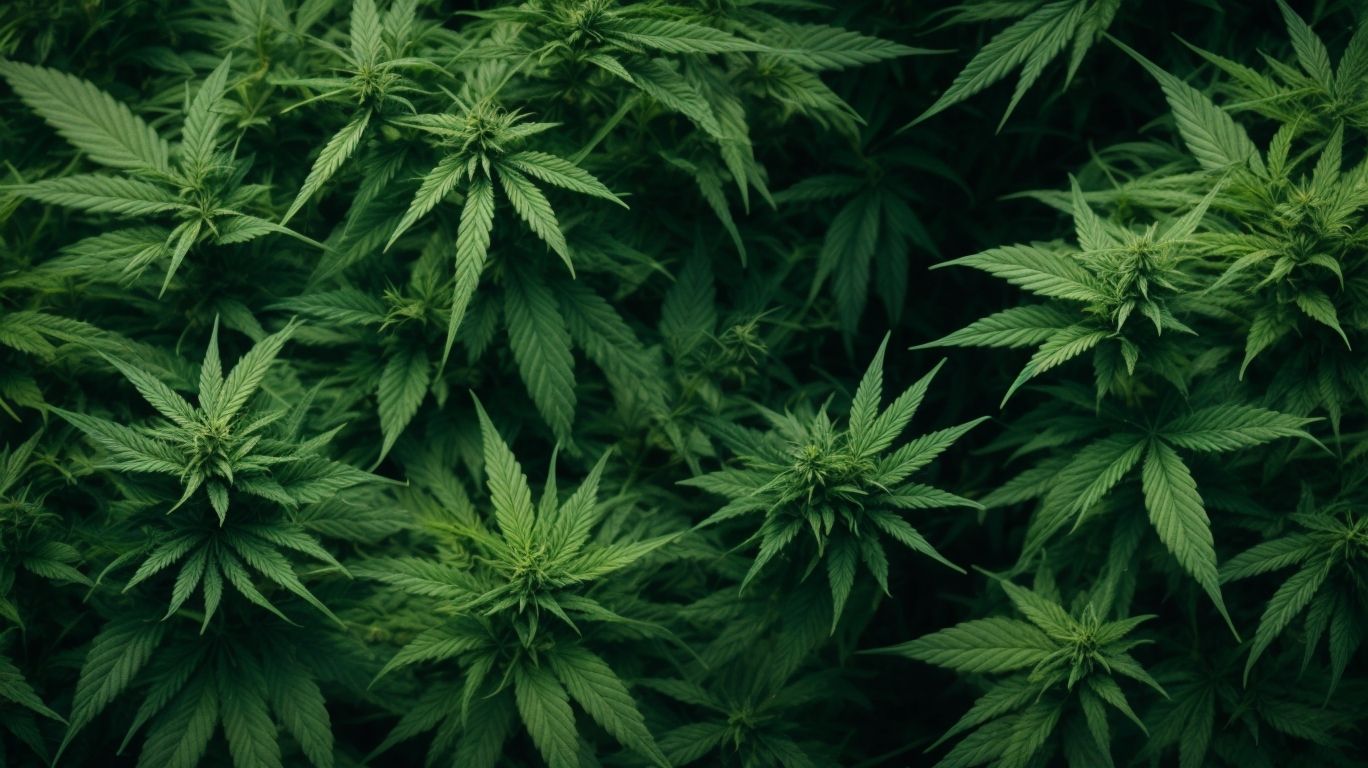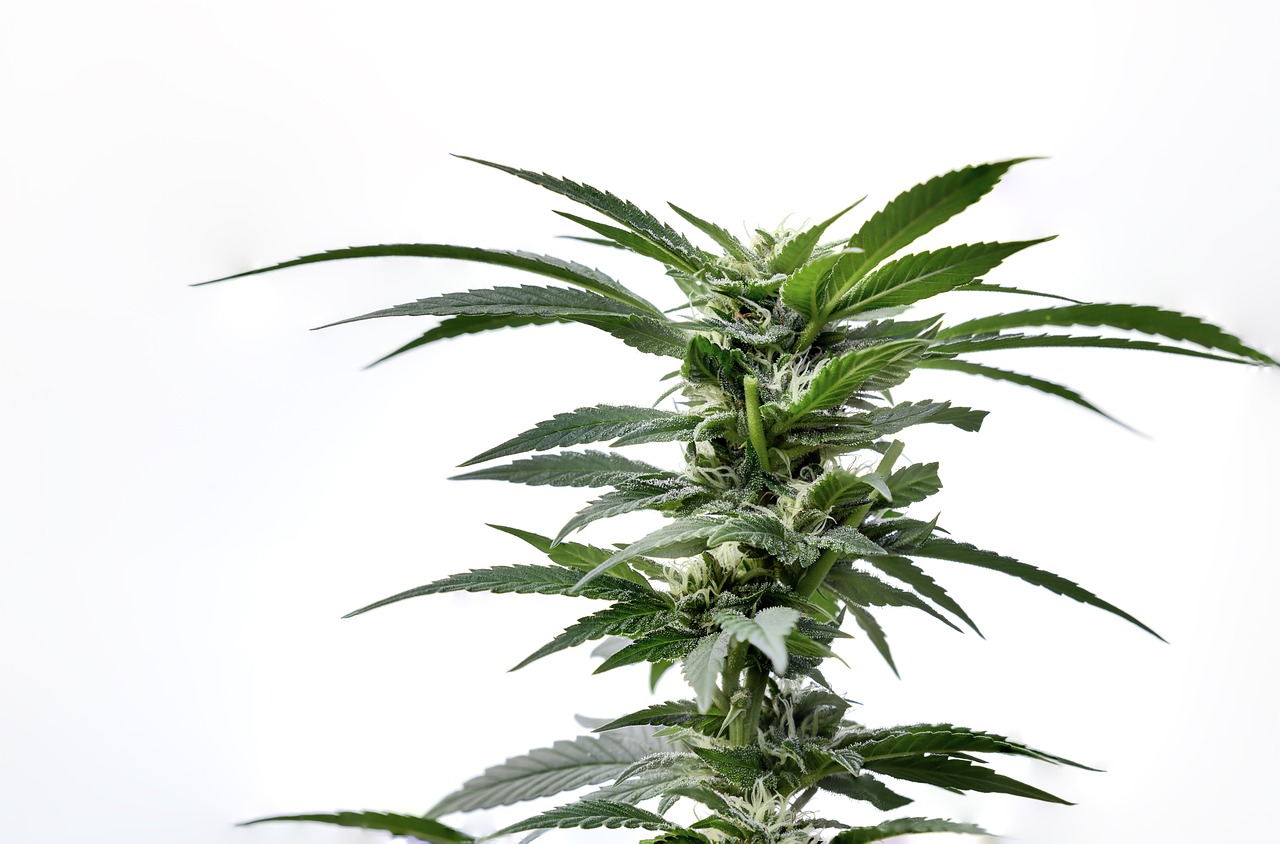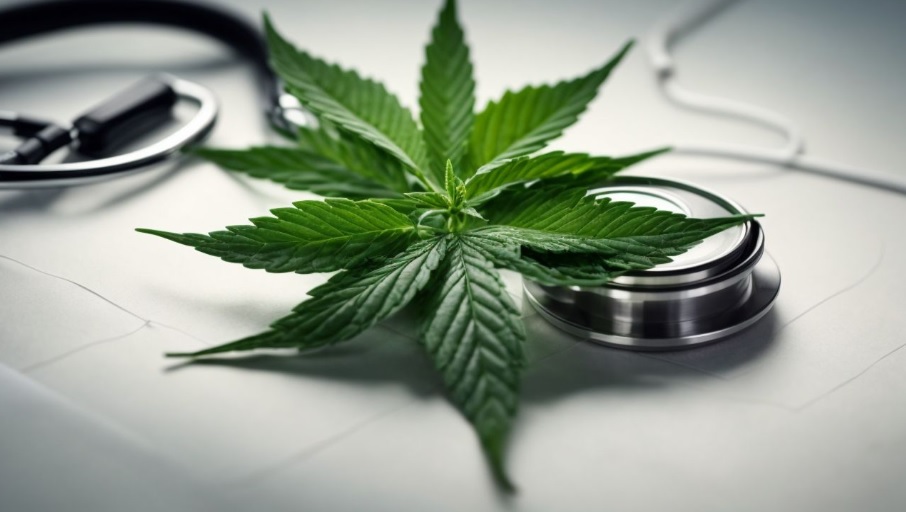Curious about the differences between hemp and marijuana, two popular plants often associated with each other?
We explore the chemical composition, cultivation methods, uses, and legality of both hemp and marijuana.
Delve into the similarities between the two plants, such as being varieties of cannabis, containing cannabinoids, and having medicinal properties.
Discuss the unique benefits of hemp, including its rich nutrients, sustainability, and versatile uses, as well as the benefits of marijuana, such as hemp pain relief, nausea reduction, and treatment for specific medical conditions.
Join us as we uncover the fascinating world of hemp and marijuana!
What Is Hemp?
Hemp, a versatile plant belonging to the cannabis family, is widely recognized for its industrial applications, particularly in the production of fibers and textiles.
Known for its robust growth in various climates, hemp requires minimal water and pesticides, making it an environmentally friendly crop. The plant’s deep roots enrich the soil, offering a natural way to prevent erosion. Hemp fibers are strong and durable, used in a range of products from clothing to paper and construction materials. Cultivating hemp involves planting the seeds close together to reduce branching and maximize fiber production. The plants mature within a few months, ready for harvesting, leading to sustainable and efficient agricultural practices.
What Is Marijuana?
Marijuana, another variant of the cannabis plant, is known for its medicinal and recreational uses, cultivated for its psychoactive effects and therapeutic properties.
The distinct characteristics of marijuana, such as its ability to induce relaxation and alter perceptions, have made it a popular choice for both medical treatment and recreational enjoyment.
Cultivation methods for marijuana plants vary, with some growers opting for indoor hydroponic setups to control growing conditions while others prefer outdoor cultivation for a more natural approach.
Understanding the plant anatomy of marijuana, including leaves, flowers, and trichomes that contain psychoactive compounds like THC and CBD, is crucial for maximizing its potential benefits.
What Are the Differences Between Hemp and Marijuana?
Hemp and marijuana exhibit distinct differences in their properties and uses despite belonging to the same cannabis plant species, with variations in cannabinoid content and psychoactive effects setting them apart.
Chemical Composition
The chemical composition of hemp and marijuana diverges primarily in their cannabinoid content, with hemp containing high levels of CBD and minimal THC, while marijuana is characterized by elevated THC levels and varying CBD concentrations.
CBD, or cannabidiol, is a non-intoxicating compound found abundantly in hemp, known for its potential therapeutic benefits without the psychoactive effects associated with THC. In contrast, THC, or tetrahydrocannabinol, is the psychoactive component in marijuana responsible for the ‘high’ sensation. These different cannabinoid profiles result in varying effects on the body when consumed. Hemp-derived CBD products are often sought for their potential calming and anti-inflammatory properties, while marijuana with its higher THC content is typically used for its euphoric and pain-relieving effects.
Cultivation
Hemp and marijuana cultivation practices differ significantly, with hemp being grown as an industrial crop in various climates and marijuana requiring specific growing conditions for optimal yield and cannabinoid production.
While hemp thrives in a variety of soil types and can tolerate different environmental conditions, marijuana is more finicky, requiring precise temperature, humidity, and light levels to reach its full potential.
Agricultural practices for hemp usually involve direct seeding or transplanting seedlings, while marijuana is often propagated through cloning or seed germination.
Hemp is commonly cultivated for its fibers, seeds, and CBD content, whereas marijuana is primarily cultivated for its psychoactive properties.
Understanding these distinctions is crucial for successful cultivation and management of these crops.
Uses
Hemp and marijuana serve distinct purposes in various industries and applications, with hemp predominantly utilized for industrial products like textiles, while marijuana finds application in medicinal treatments and recreational consumption.
Hemp fibers are known for their strength and durability, making them ideal for clothing, ropes, and building materials.
Alternatively, marijuana, with its high concentration of cannabinoids like THC and CBD, is used in alternative medicine to alleviate symptoms of conditions such as chronic pain, nausea, and spasticity.
The growing acceptance of marijuana’s medicinal benefits has led to increased research and development in the field of cannabis-based treatments.
Legality
The legal status of hemp and marijuana varies across federal and state jurisdictions, with hemp being federally legal for industrial use but subject to state regulations, while marijuana’s legality hinges on individual state laws governing medicinal and recreational use.
Although hemp cultivation is permitted under the 2018 Farm Bill, strict guidelines are in place to ensure regulatory compliance. On the other hand, marijuana remains a Schedule I controlled substance at the federal level, leading to varying enforcement practices across states with differing stances. States like California and Colorado have legalized both medicinal and recreational marijuana, emphasizing taxation as a regulatory tool, while others maintain strict prohibitions. Navigating this complex legal landscape requires a thorough understanding of federal regulations and state-specific nuances to ensure compliance and avoid potential legal implications.
What Are the Similarities Between Hemp and Marijuana?
Despite their differences, hemp and marijuana share commonalities as varieties of the cannabis plant, both containing cannabinoids with medicinal properties that offer therapeutic benefits to users.
Both Are Varieties of Cannabis
Both hemp and marijuana are categorized under the cannabis plant species, each with distinct properties and cannabinoid content that contribute to their individual uses and effects.
While both hemp and marijuana belong to the same cannabis plant species, they differ significantly in terms of their cannabinoid profiles, plant genetics, and uses.
Hemp is characterized by its high levels of cannabidiol (CBD) and low tetrahydrocannabinol (THC) content, making it ideal for various industrial applications, such as fiber production and CBD extraction.
On the other hand, marijuana contains higher levels of THC, the psychoactive compound responsible for its recreational and medicinal effects.
These differences in cannabinoid composition and genetics determine the legal classifications, cultivation methods, and consumer preferences associated with hemp and marijuana.
Both Contain Cannabinoids
Both hemp and marijuana contain a diverse range of cannabinoids and terpenes, compounds that contribute to their medicinal uses and therapeutic potential for various health conditions.
The presence of cannabinoids such as CBD (cannabidiol) and THC (tetrahydrocannabinol) in both hemp and marijuana plays a crucial role in their therapeutic effects. CBD is known for its anti-inflammatory and analgesic properties, offering relief from chronic pain, anxiety, and epilepsy. On the other hand, THC is responsible for the psychoactive effects associated with marijuana but also has potential pain-relieving and appetite-stimulating properties. Terpenes, the aromatic compounds found in these plants, further enhance therapeutic benefits by interacting with cannabinoids in what is known as the entourage effect.
Both Have Medicinal Properties
Both hemp and marijuana exhibit medicinal properties that promote health and wellness, with cannabinoids in each plant offering natural remedies and alternative medicine for various health conditions.
- The cannabinoids found in hemp and marijuana, such as CBD and THC, have been the subject of numerous studies highlighting their therapeutic effects. From relieving chronic pain and inflammation to managing anxiety and improving sleep quality, these herbal remedies have gained popularity for their ability to alleviate symptoms naturally.
- Incorporating hemp and marijuana-based products into wellness routines can also support overall health and balance in the body, showcasing the potential of alternative medicine in modern healthcare practices.
What Are the Benefits of Hemp?
Hemp is renowned for its numerous benefits, being rich in nutrients, a sustainable crop choice, and offering versatile uses across various industries and applications.
This remarkable plant is not only packed with essential nutrients like protein, fiber, and healthy fats but also requires significantly less water and land compared to many other crops, making it an environmentally friendly option. In addition to its nutritional value, hemp is known for its durability, making it an ideal material for textiles and construction. Its versatility extends to industries like automotive, paper, and cosmetics, contributing to its economic impact and potential for sustainable farming practices.
Rich in Nutrients
Hemp stands out for being rich in essential nutrients that contribute to overall health and wellness, making it a valuable addition to a balanced diet and lifestyle.
It is renowned for its high concentration of omega-3 and omega-6 fatty acids, which are crucial for brain function and heart health. Hemp is a great source of plant-based protein, containing all nine essential amino acids required by the body. These amino acids play a vital role in muscle repair and growth.
Hemp seeds are packed with minerals like magnesium, iron, and zinc, which support immune function and promote energy production. The fiber content in hemp also aids in digestion and helps maintain a healthy gut microbiome, leading to overall improved well-being.
Sustainable Crop
Hemp’s status as a sustainable crop makes it a preferred choice for eco-conscious farming practices, promoting environmental sustainability and conservation of natural resources.
Its versatility in various agricultural practices allows hemp to thrive in different climates, requiring minimal irrigation and chemicals to grow. The deep roots of hemp plants help improve soil structure and reduce soil erosion, making them beneficial for crop rotation and enhancing overall soil health. Hemp cultivation requires less water compared to other crops, further contributing to water conservation efforts. By replacing synthetic materials with hemp fibers, farmers can reduce their carbon footprint and support more sustainable production methods in the agricultural industry.
Versatile Uses
Hemp’s versatility shines through its myriad uses in industrial applications, serving as a primary ingredient in various hemp-derived products such as CBD oil, textiles, and building materials.
These applications extend beyond consumer goods, with hemp also finding a place in sustainable construction practices. Hemp fibers are environmentally-friendly alternatives to traditional materials like fiberglass and concrete, offering durability and strength while reducing carbon footprint. The use of hempcrete, a blend of hemp hurds and lime, in building construction showcases the plant’s potential to revolutionize the construction industry by providing a renewable and eco-friendly building solution.
What Are the Benefits of Marijuana?
Marijuana offers significant benefits, including pain relief, alleviation of nausea, and effective treatment for various medical conditions that enhance the quality of life for patients.
The pain-relieving properties of marijuana have been widely recognized in the medical field, making it a valuable option for individuals suffering from chronic discomfort. Its anti-nausea effects have proven to be beneficial for patients undergoing chemotherapy or experiencing nausea due to other medical reasons. The therapeutic uses of marijuana in managing conditions such as epilepsy, multiple sclerosis, and chronic pain have opened up new avenues for treatment that adhere to strict health regulations and continue to be a subject of ongoing research in the medical community.
Pain Relief
One of the primary benefits of marijuana is its ability to provide effective pain relief, offering therapeutic effects that alleviate discomfort and improve the quality of life for individuals dealing with chronic pain.
Its pain-relieving properties have been noted in various studies, showing promise in managing symptoms of conditions such as arthritis, multiple sclerosis, and cancer-related pain.
The therapeutic potential of marijuana lies in its interaction with the endocannabinoid system, which regulates pain perception. By targeting specific receptors in the body, marijuana can help reduce inflammation and nerve pain, making it a valuable option for those seeking alternative pain management strategies.
It is important to consider potential health risks associated with marijuana use, such as dependency and cognitive impairment in some cases, highlighting the need for responsible and informed consumption.
Reduces Nausea
Marijuana’s ability to reduce nausea and vomiting makes it a valuable medicinal resource, particularly for individuals undergoing chemotherapy or experiencing gastrointestinal distress.
The cannabinoids found in marijuana, such as THC and CBD, interact with the body’s endocannabinoid system to alleviate nausea symptoms. This natural plant-based remedy offers a promising alternative for patients who do not respond well to traditional anti-nausea medications.
Studies have shown that marijuana can also be effective in managing nausea associated with conditions like motion sickness and migraines. By targeting the serotonin receptors in the brain, marijuana helps to regulate and suppress the feelings of nausea, providing relief to those in need.
Treats Certain Medical Conditions
Marijuana demonstrates efficacy in treating specific medical conditions such as epilepsy, multiple sclerosis, and chronic pain, showcasing its therapeutic potential and broad applications in healthcare.
Research has also indicated that medical marijuana can be beneficial in managing symptoms associated with anxiety, depression, and post-traumatic stress disorder. Cannabinoids found in marijuana have shown promise in reducing inflammation and may play a role in regulating the immune system. Medical marijuana has been used to alleviate chemotherapy-related nausea and improve appetite in cancer patients undergoing treatment. The versatility of medical marijuana in addressing a wide range of health issues has sparked interest in exploring its potential for managing chronic illnesses and promoting overall well-being.




